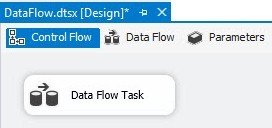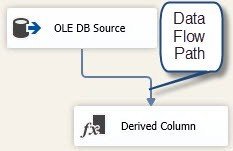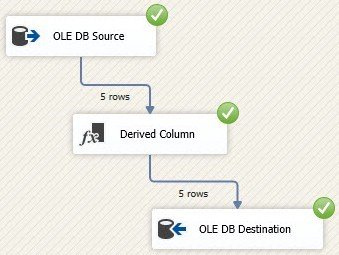[Note from Pinal]: This is a new episode of Notes from the Field series. SQL Server Integration Service (SSIS) is one of the most key essential part of the entire Business Intelligence (BI) story. It is a platform for data integration and workflow applications. As wikipedia says – It features a fast and flexible data warehousing tool used for data extraction, transformation, and loading (ETL). The tool may also be used to automate maintenance of SQL Server databases and updates to multidimensional cube data.

In this episode of the Notes from the Field series I asked SSIS Expert Andy Leonard a very crucial question – How to learn SSIS data flow task? Andy was very kind to answer the questions and provides plenty of information about how a novice developer can learn SSIS from the beginning and become expert in the technology.
If you know SQL Server, you’re likely aware of SQL Server Integration Services (SSIS). What you might not realize is that SSIS is a development platform that allows you to create and perform some interesting Control Flow Tasks. In the first blog post in this series, I showed how to use the Execute SQL Task. Now, let’s look at the Data Flow Task. When developing solutions with SSIS, I use a handful of Control Flow tasks:
- Execute SQL Task
- Data Flow Task
- Script Task
- Execute Package Task
- File System Task
- Execute Process Task
This list is a good approximation of which tasks I use most, too – from most-used to least-used. In this article I provide a basic example of configuring the SSIS Data Flow Task, shown in Figure 1:

Figure 1: SSIS Data Flow Task
The SSIS Data Flow Task is a very special task. It is the only task to have its own tab in the Integrated Development Environment (IDE) as shown in Figure 2:

Figure 2: The Data Flow Tab
If you click on the tab, you will note a new SSIS Toolbox containing Data Flow-specific components, as shown in Figure 3:

Figure 3: Data Flow SSIS Toolbox
SSIS Data Flows are typically used to move data from one location to another. The data flow accomplishes data movement by first reading data into Data Flow Buffers. Think of a buffer as a region of memory SSIS uses to hold data rows as the rows are processed by the data flow. In Figure 4, I have configured an OLE DB Source Adapter to pump data rows into the data flow:

Figure 4: Configuring an OLE DB Source Adapter
The data is often transformed while being moved from one location to another. The SSIS data flow components that perform transforming operations are called Transformations, and they are joined to other data flow components by Data Flow Paths. An example of a transformation is the Derived Column Transformation, as shown in Figure 5:

Figure 5: Adding a Derived Column Transformation and a Data Flow Path
You can use transformations to perform many operations (e.g., you can manipulate values of columns in rows, you can remove or redirect rows based on column values, etc.) on the data as it flows through the data flow task. For example, the Derived Column Transformation permits you to manipulate (transform) existing data or to combine existing data to create new columns, as shown in Figure 6:

Figure 6: Creating a New Column with the Derived Column Transformation
I created a new column named “UpperCaseName” in the Derived Column Transformation. I used SSIS Expression Language to define the transform – “UPPER([Name])” in this case.
Note: SSIS Expression Language is very powerful and very difficult to learn. For more information, please see Linchpin People’s SSIS Expression Language series.
Now I need to land these rows into a table. I’ll use an OLE DB Destination Adapter – connected from the Derived Column Transformation via data flow path – to accomplish loading our transformed rows into a table, as shown in Figure 7:

Figure 7: Configuring an OLE DB Destination Adapter
Once the OLE DB Destination Adapter is configured, you can execute either the package or the Data Flow Task as shown in Figure 8:

Figure 8: Test Execution Successful!
In this article, I shared an introduction to the SSIS Data Flow Task and some of its functionality. Although I barely scratched the surface of Data Flow capabilities, you should now be able to compose and test your first SSIS Data Flow!
:{>
If you want to get started with SSIS with the help of experts, read more over at Fix Your SQL Server.
Reference: Pinal Dave (https://blog.sqlauthority.com)




